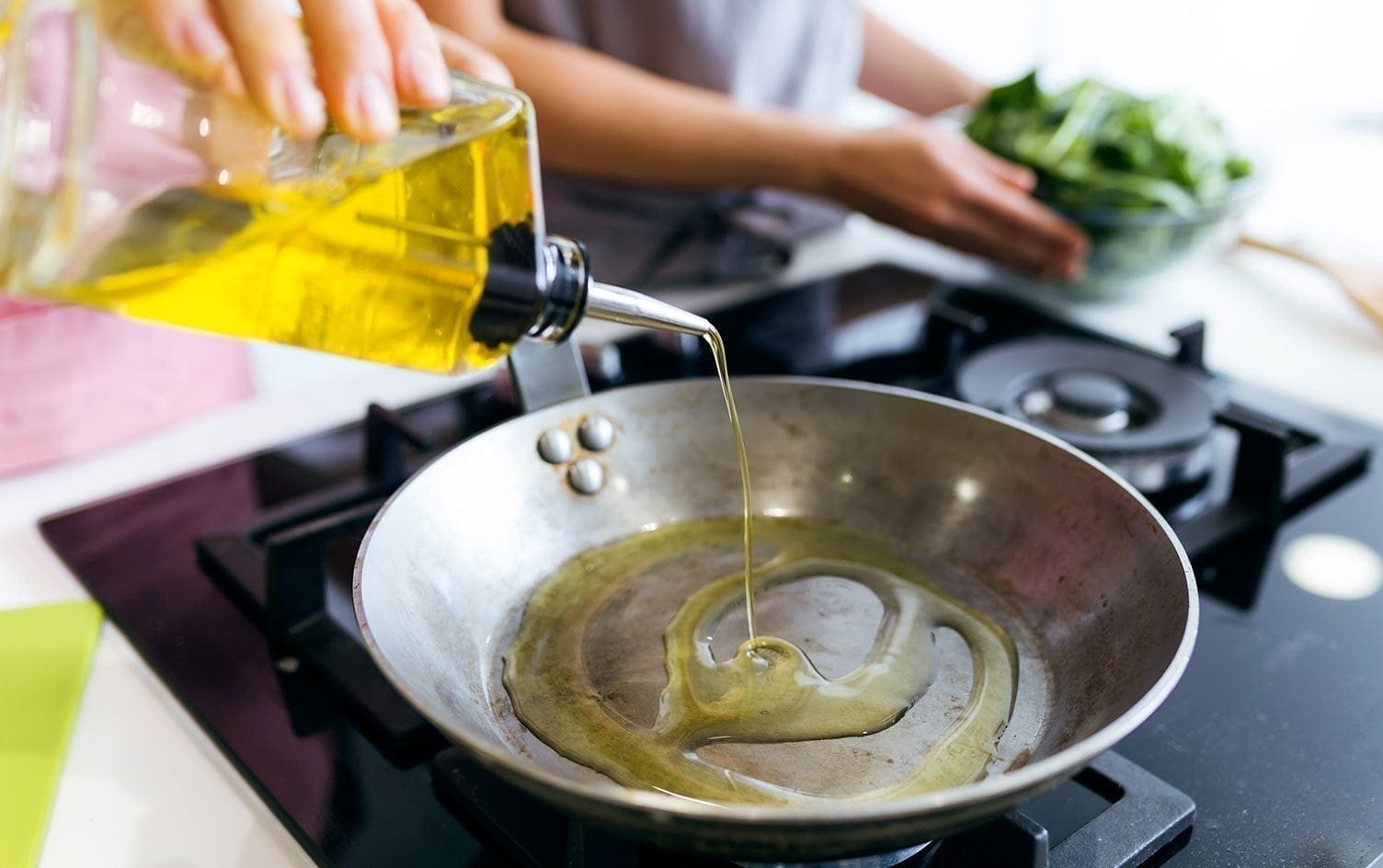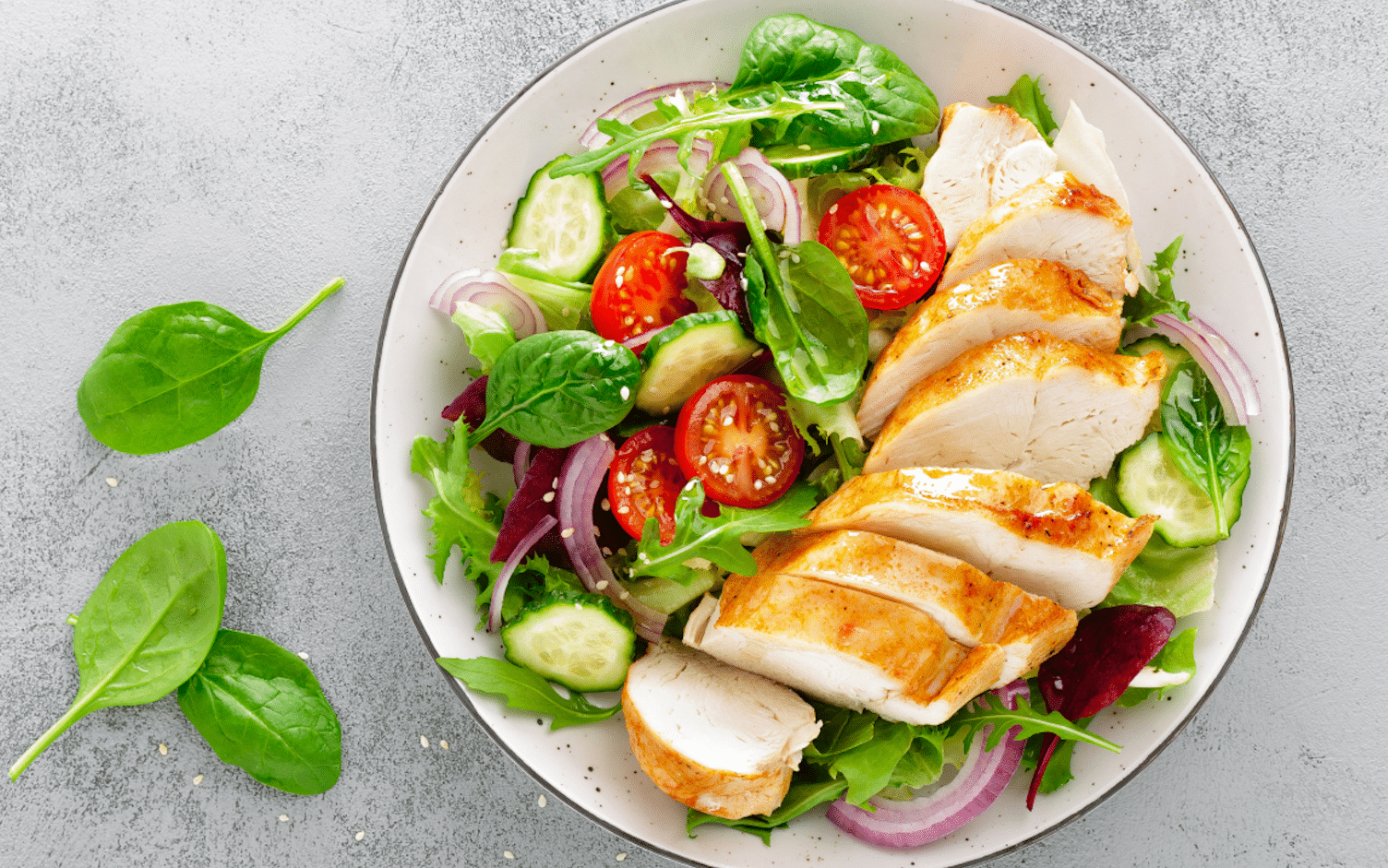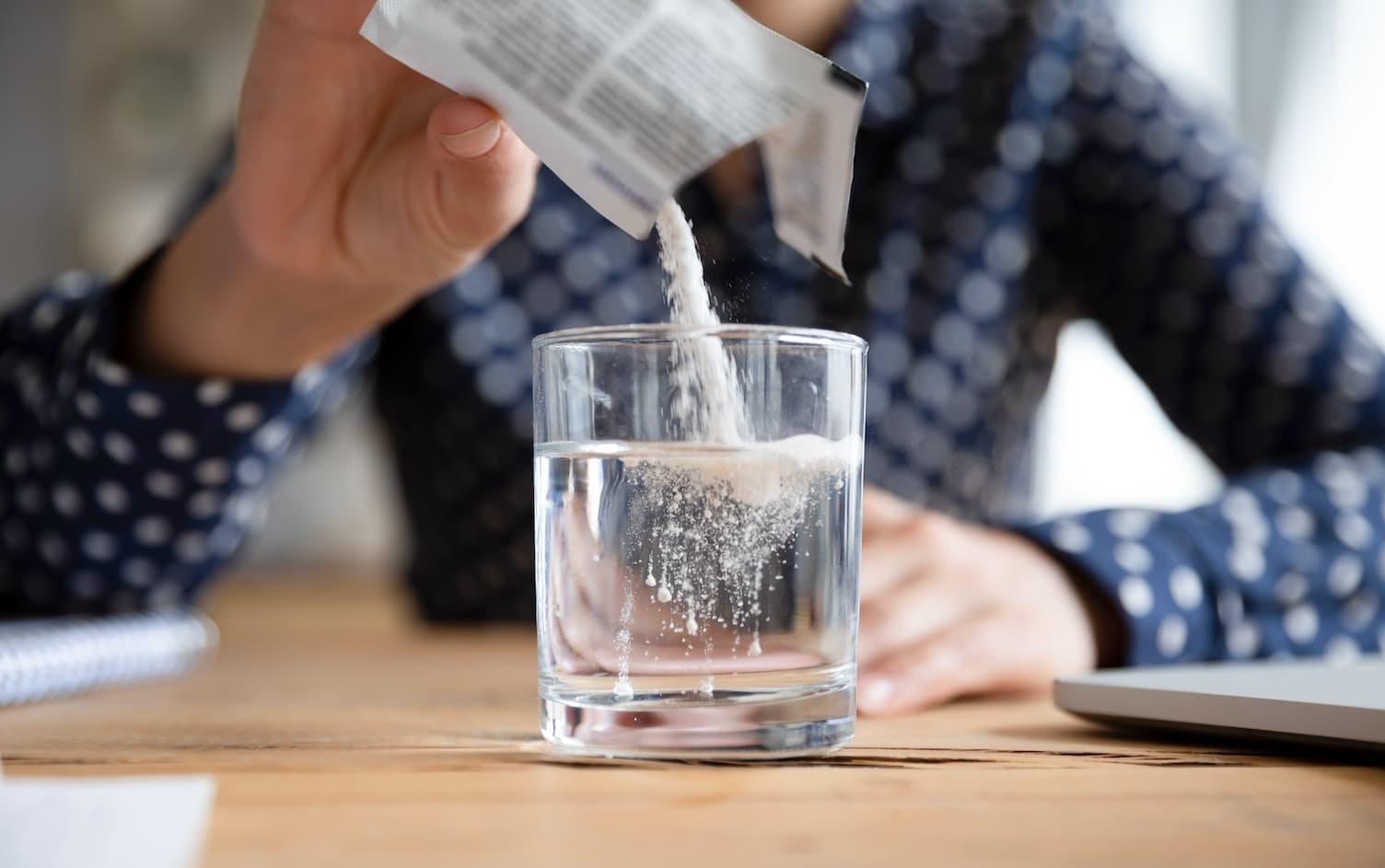Despite the plethora of fat-free foods on the market, fat is actually a necessary nutrient. Your body needs fat for energy, cell growth and the absorption of important nutrients like vitamin B. In the kitchen, fat is also important — we can all agree it just tastes good.
There’s a reason chefs like to say “fat is flavor.” Fat helps food caramelize — a method called the Maillard reaction, which browns the natural sugars and amino acids in foods so it has depth of flavor, like a seared steak, pan-seared vegetables and golden baked cookies. Fat also adds creaminess to things like salad dressing and popcorn.
When it comes to choosing cooking fats, specifically oils (butter is an entirely separate conversation), no two are alike. They all have pros and cons depending on the type of cooking you’re doing.
Here are five common cooking oils and the best way to use them:
1. OLIVE OIL
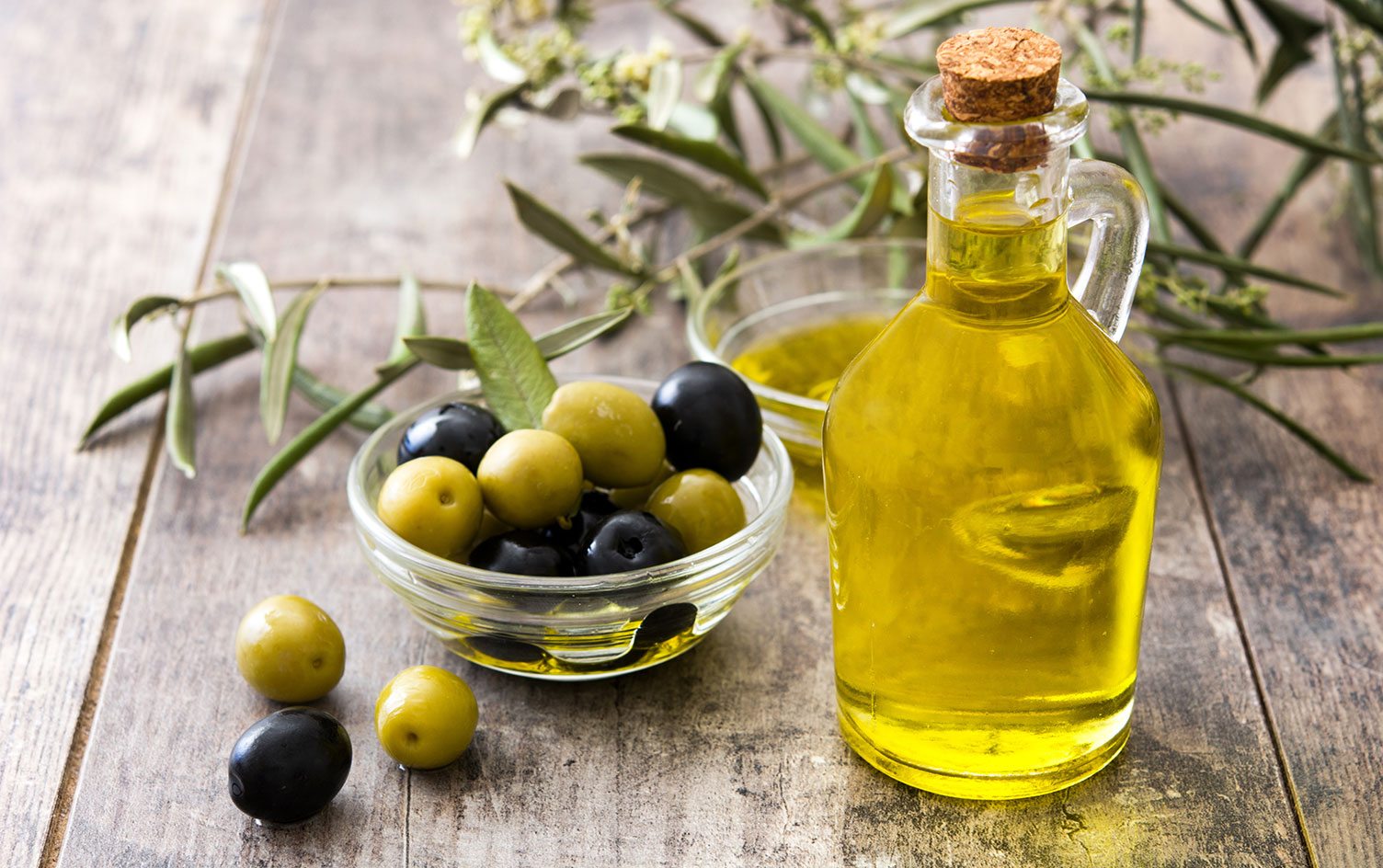
Oh, olive oil — let us count the ways we adore you, including the benefits in a Mediterranean diet. Populations from that region have longer life expectancies and lower risks of heart disease, high blood pressure and stroke, compared with North Americans and Northern Europeans. Monounsaturated fatty acids (MUFAs) are considered a healthy dietary fat, as opposed to saturated and trans fats.
Because heat greater than 200 degrees can denature olive oil, ruining its subtle flavor, choose a simple, low-cost, unrefined olive oil for cooking. Use a more flavorful olive oil, preferably of single origin, to lightly dress greens, roasted vegetables and dip warm bread into.
2. AVOCADO OIL
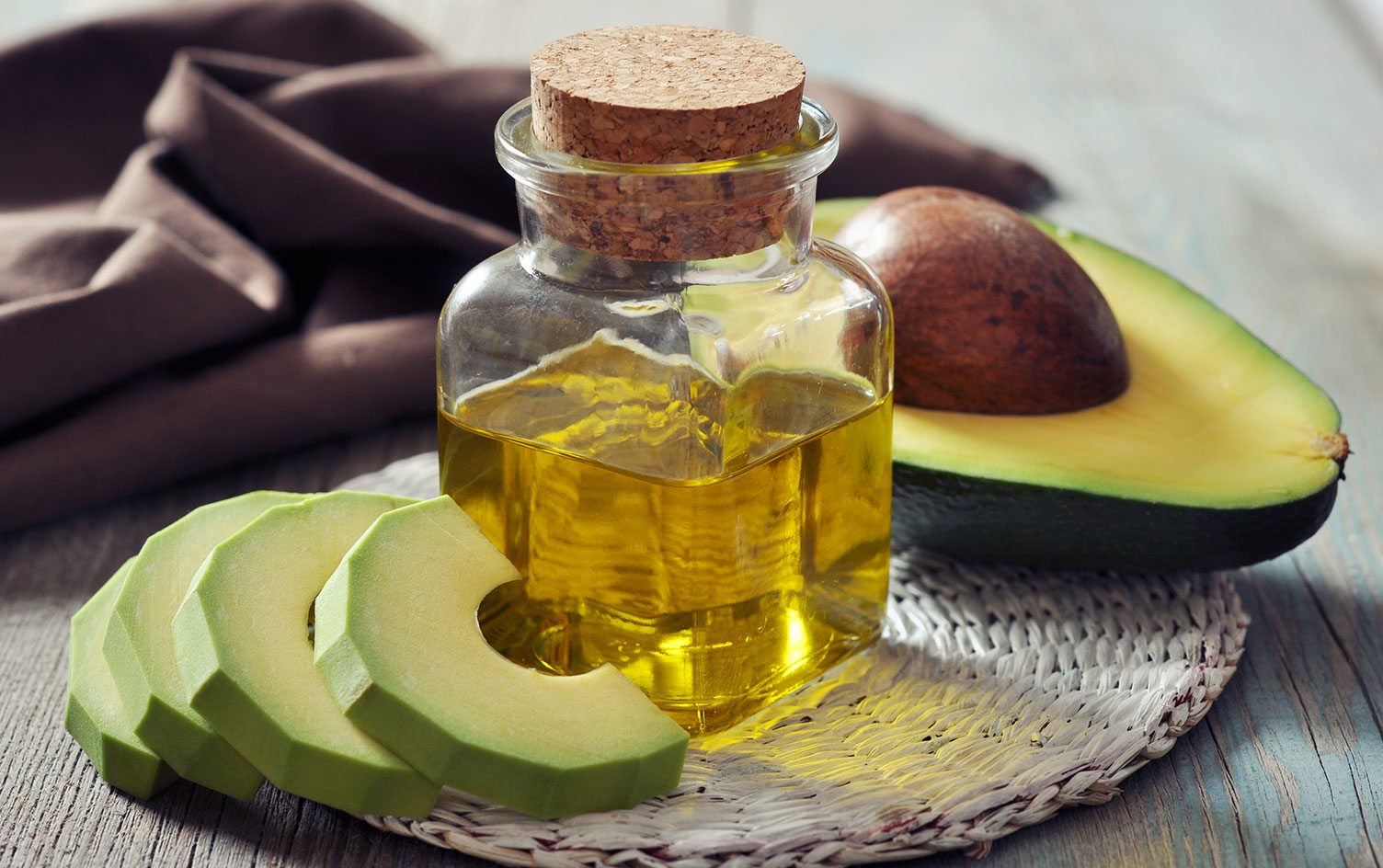
To make avocado oil, the fruit is peeled and de-seeded. After the pulp is pressed, it’s spun in a centrifuge which separates the pulp from water and natural fats. The resulting oil contains about 70% heart-healthy oleic acid, a monounsaturated omega-9 fatty acid. It’s also around 12% saturated fat and about 13% polyunsaturated fat. Avocado oil has been linked to everything from decreasing gum disease to helping reduce arthritis symptoms.
Use avocado oil in place of anything you’d normally use olive oil: in a vinaigrette, drizzled over a sandwich or to make aioli for dipping raw vegetables. Since its smoke point is almost 400 degrees, it’s a much better choice than olive oil for high-heat cooking such as in stir-fries and shallow frying.
READ MORE > 7 HEALTHY RECIPES FEATURING AVOCADO OIL
3. COCONUT OIL
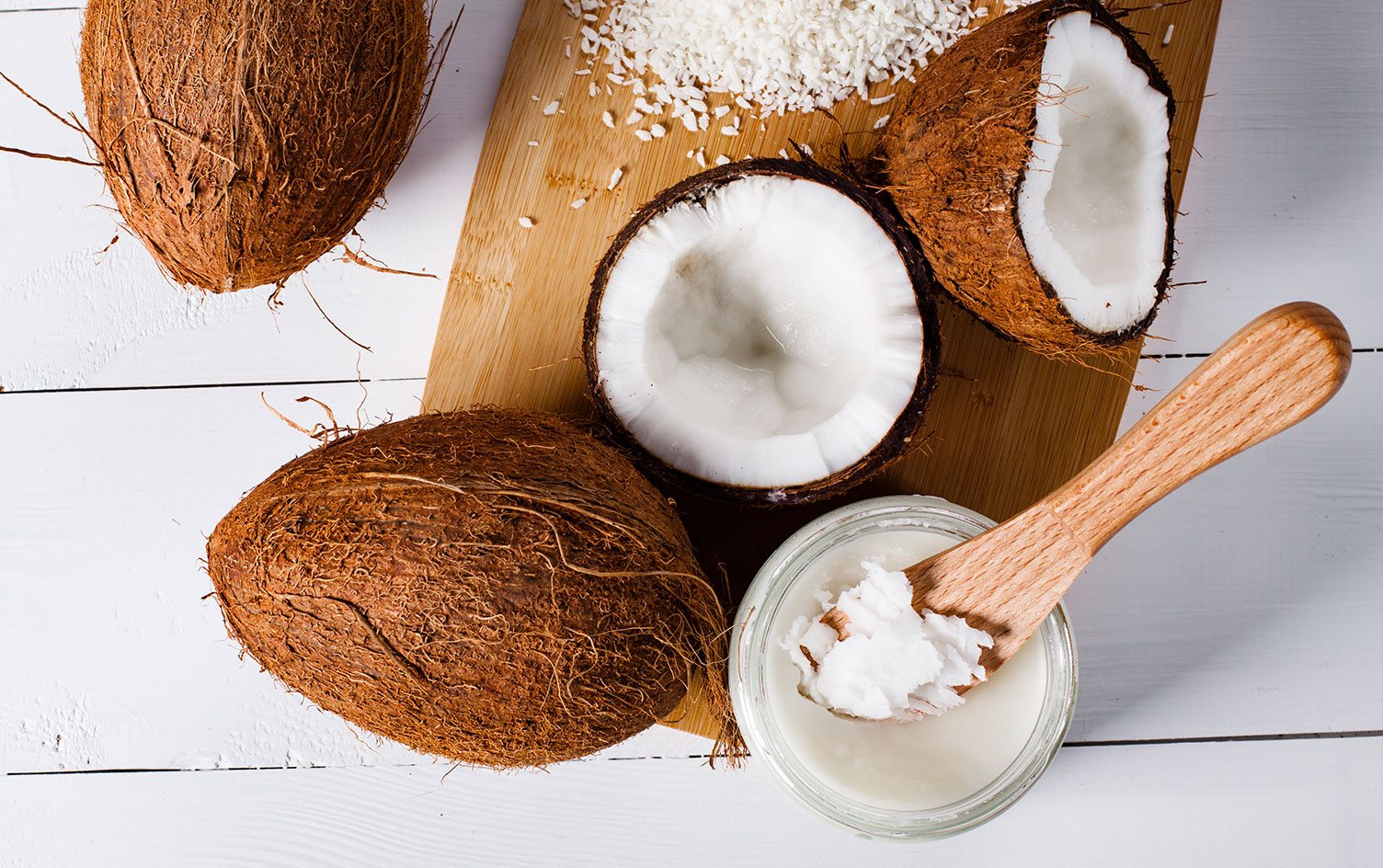
Coconut oil was recently the source of a heated debate thanks to a misunderstanding in an article published by the American Heart Association. Like any fat, don’t overindulged in it. (Read: Don’t eat a whole jar for breakfast.) Most fats have benefits, but, like all things in a health-focused diet, they should be consumed in moderation.
However, if you’re looking for a fat substitute to modernize a recipe that calls for shortening, coconut oil is a great choice. Use it as a straight substitute for the hydro-processed trans-fat (which everyone agrees is bad for you) in baking. It’s made from pressing the meat of coconuts, similar to olives, and has some antimicrobial properties.
READ MORE > 8 WAYS TO TRY COOKING WITH COCONUT OIL
4. CANOLA OIL
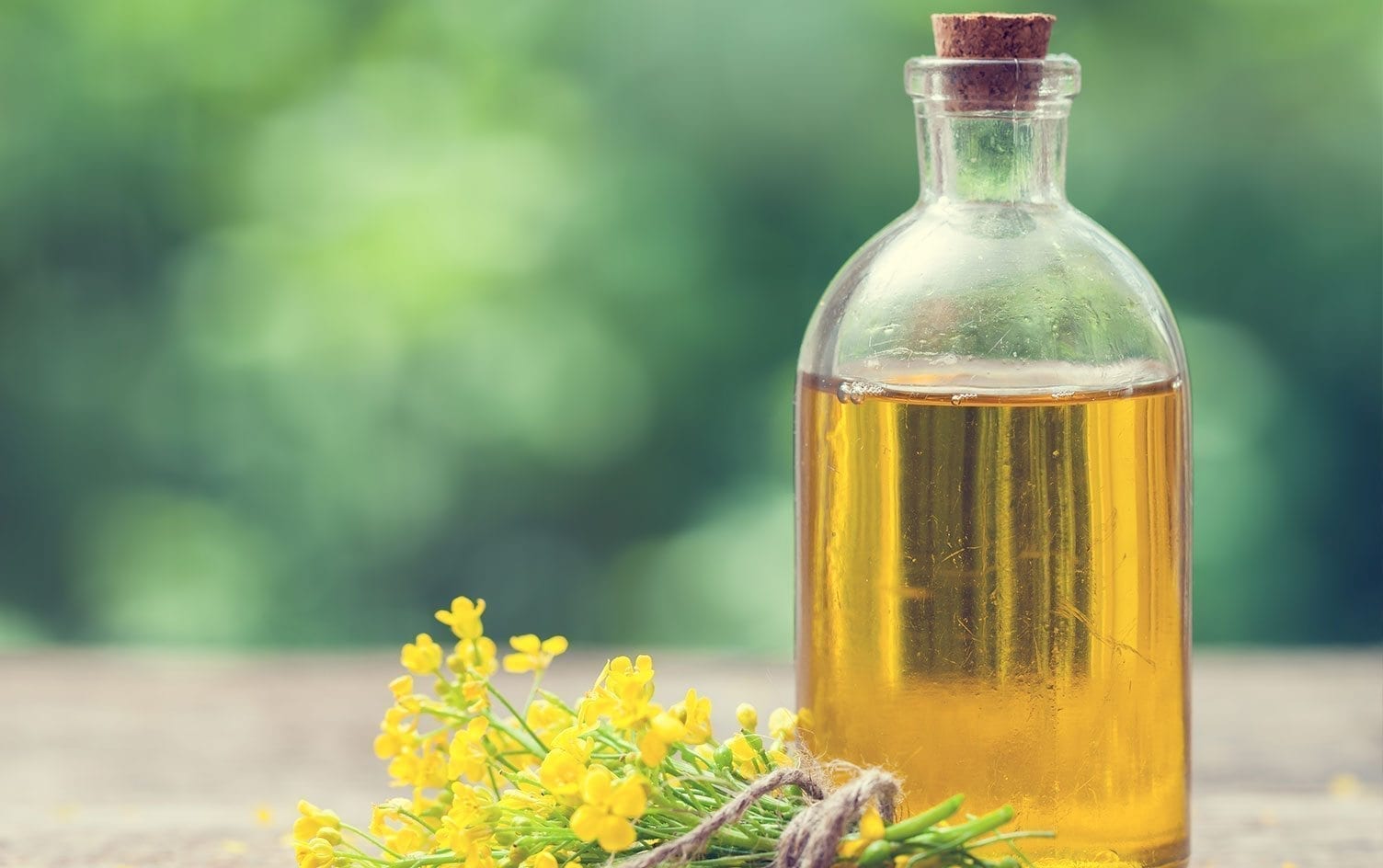
All vegetable oils contain a mix of polyunsaturated, monounsaturated and saturated fatty acids. Canola oil consists mostly of monounsaturated fats (61%, almost as much as olive oil) and polyunsaturated fats (32%). Of all vegetable oils, canola oil is lowest in saturated fats (7%). But note, it’s important to choose organic canola oil to avoid GMO plants and cold- and expeller-pressed oils, which don’t use chemicals in processing.
The benefits of cooking with canola oil are numerous. It has a high smoke point, making it a good choice for sautéing and achieving a caramel flavor. It’s also flavorless and generally less expensive than many other cooking oils, so it’s no surprise that it’s the go-to for most baking.
5. GRAPESEED OIL
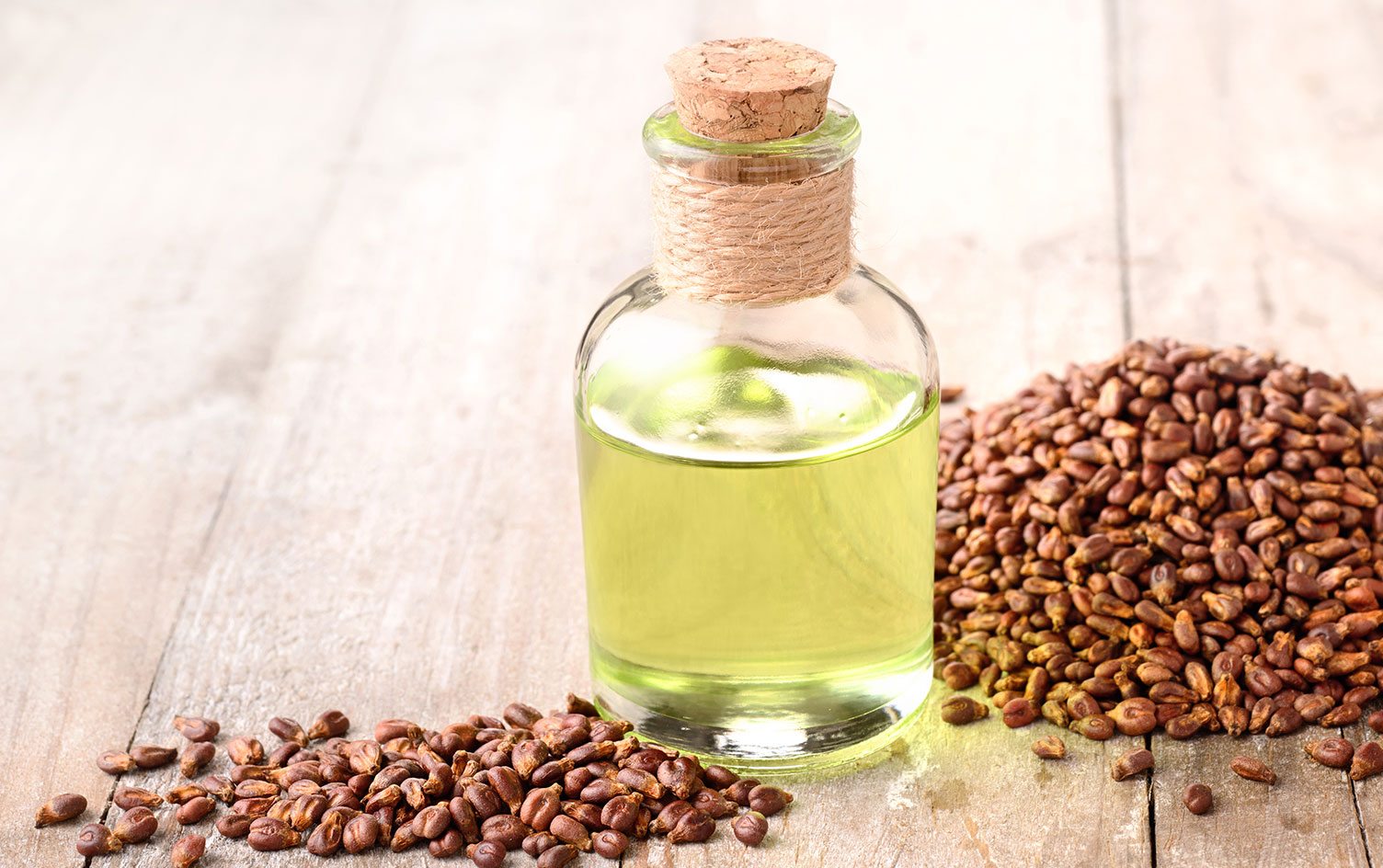
Made from crushing the seeds of grapes, grapeseed oil is a byproduct of the winemaking process. It’s a polyunsaturated fat, which scientists consider the healthiest of all fats because they contain omega-6 and omega-3 fatty acids. These fatty acids have been shown to lower “bad” LDL cholesterol, increase “good” HDL cholesterol and may decrease the risk of Type 2 diabetes.
Grapeseed oil is a prized cooking oil for its high smoke point, making it an ideal choice for stir-fries and searing seafood and meats. Since it’s basically flavorless, it’s a great complement to other high-quality ingredients like balsamic vinegar.
